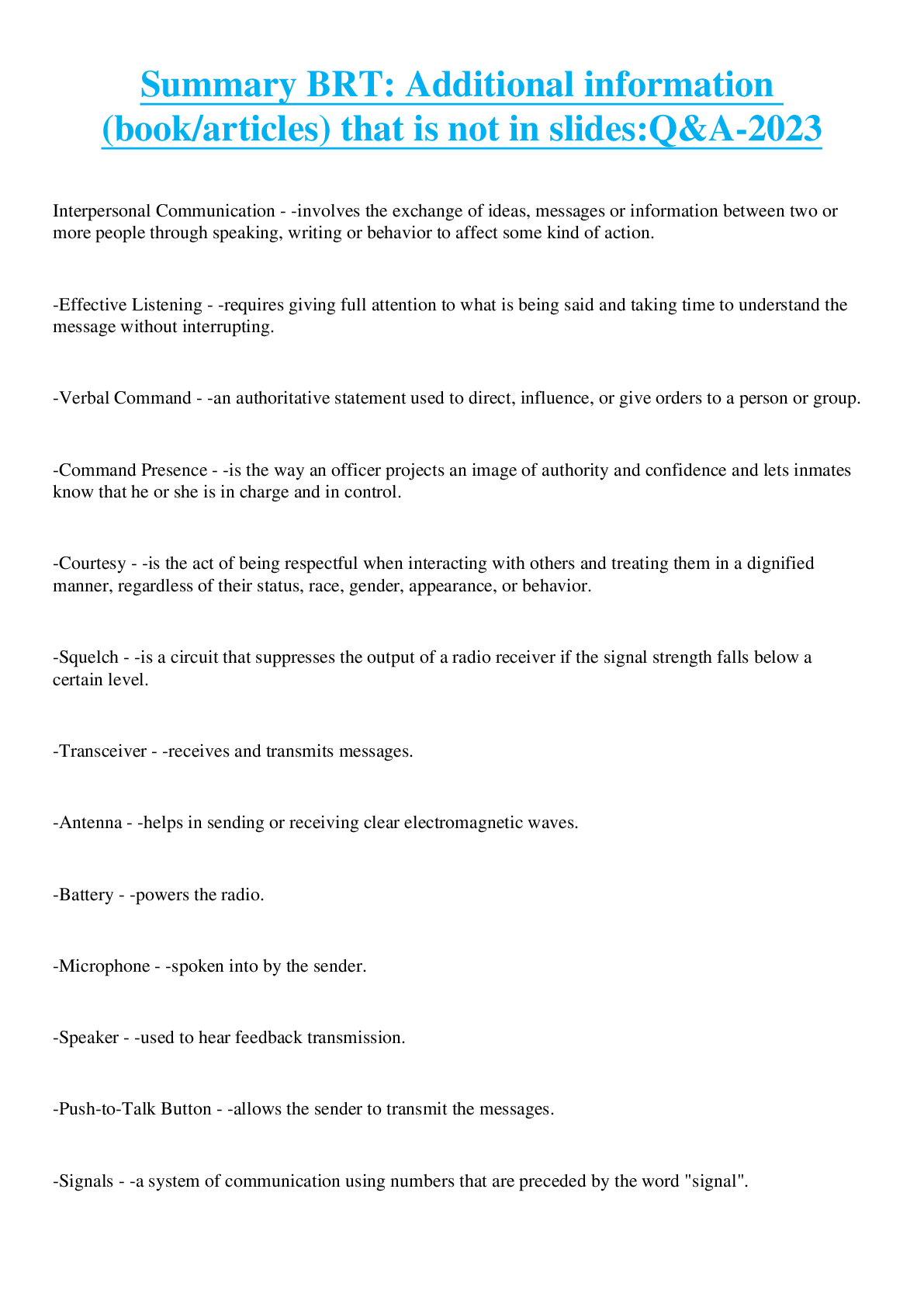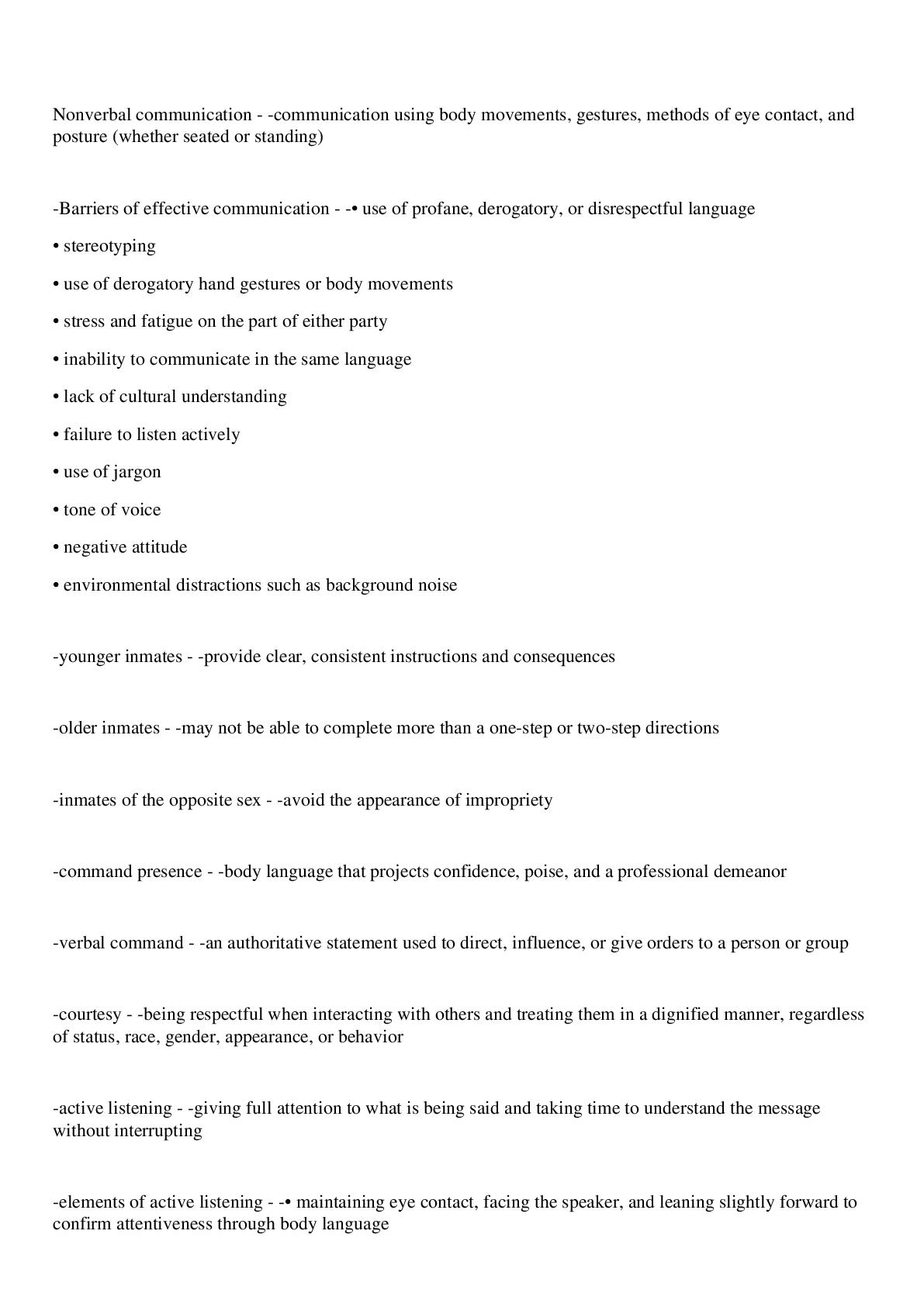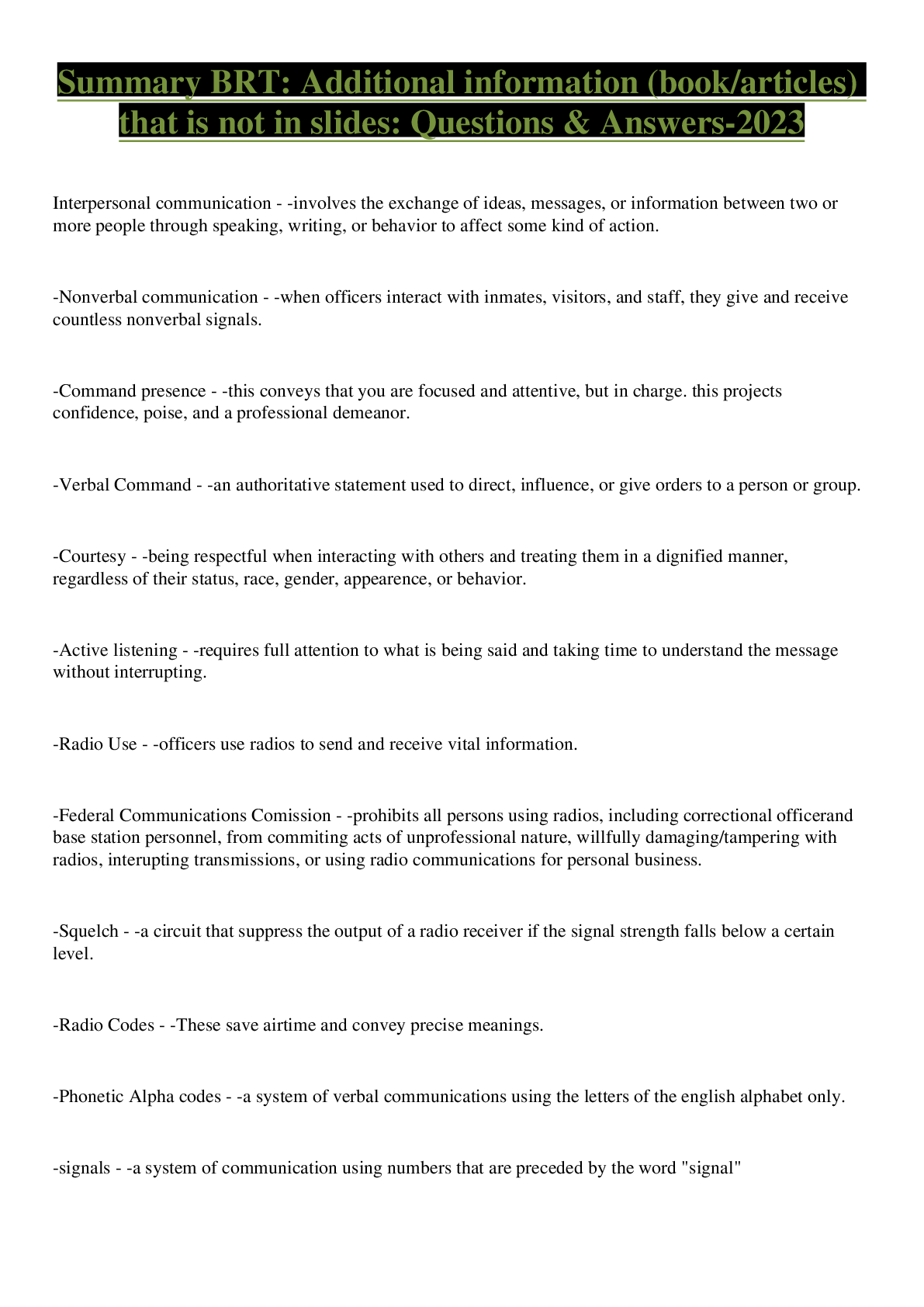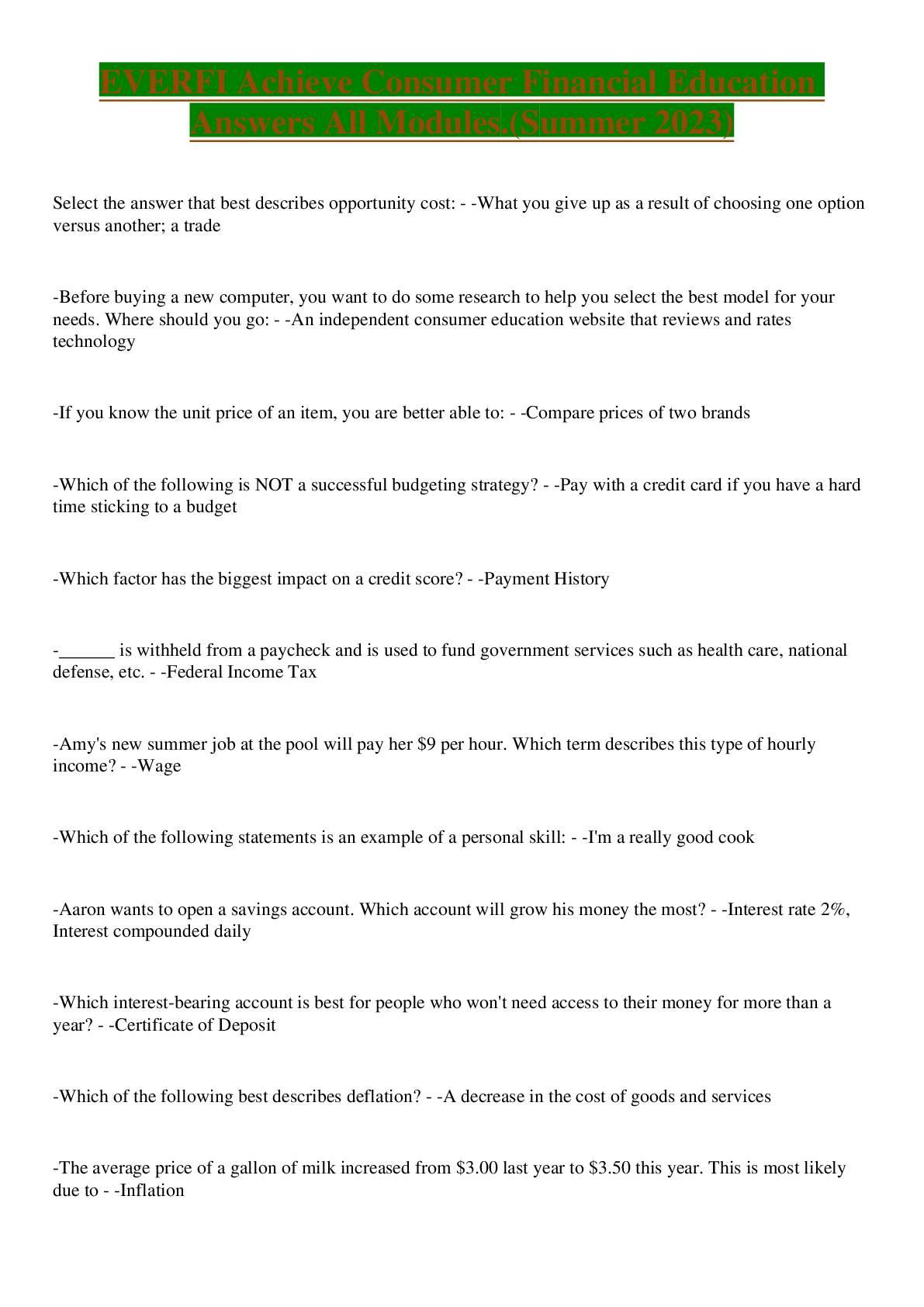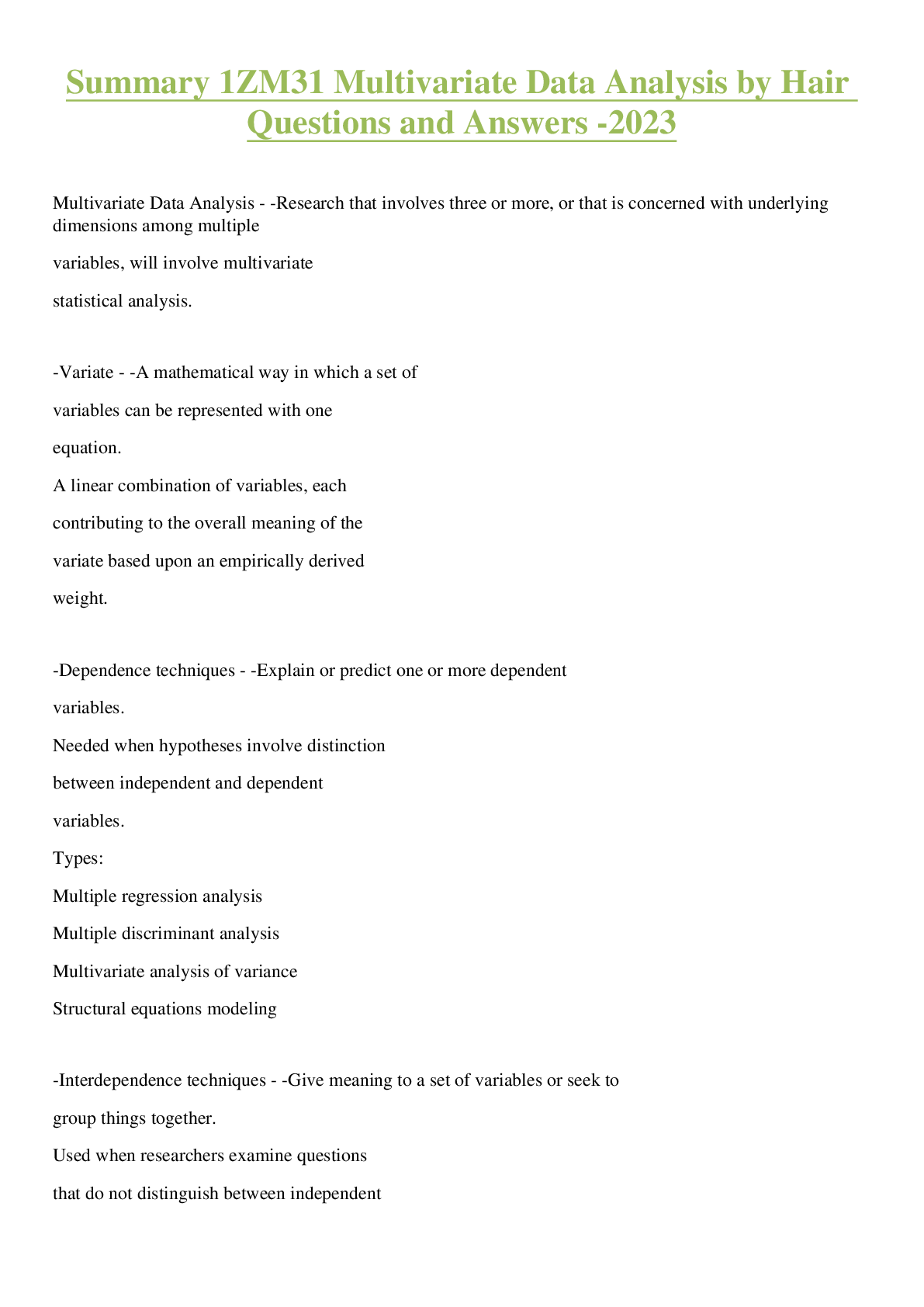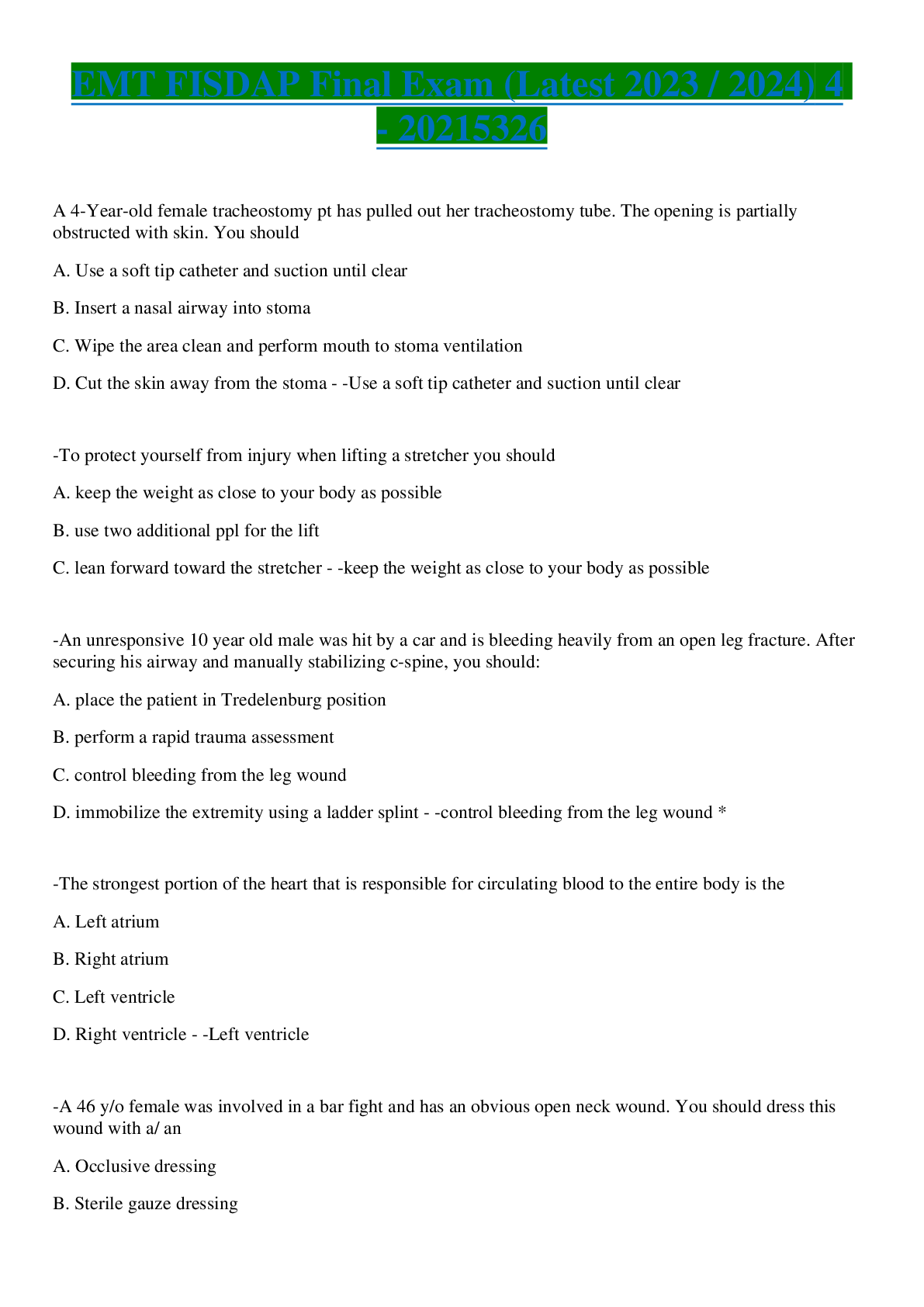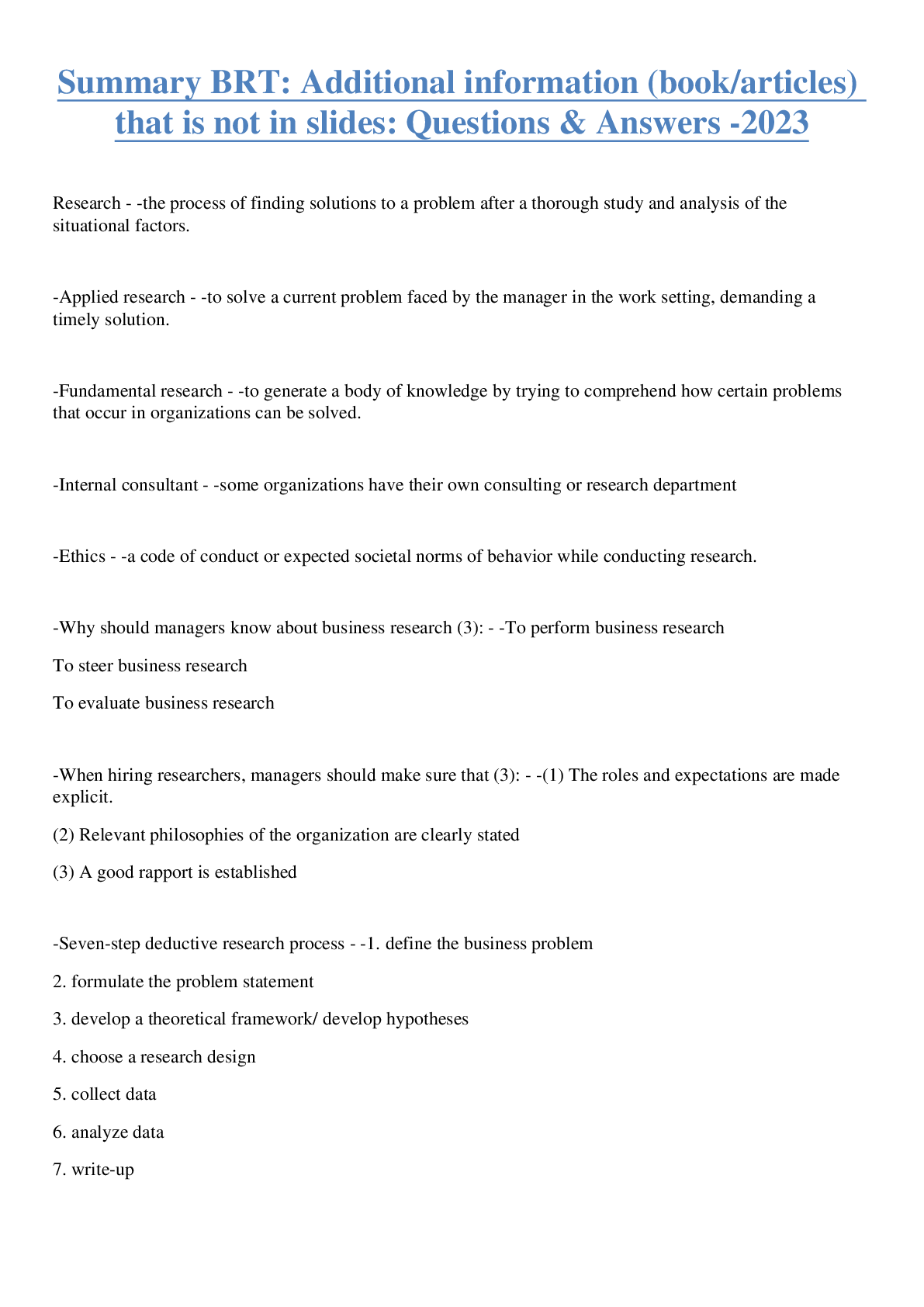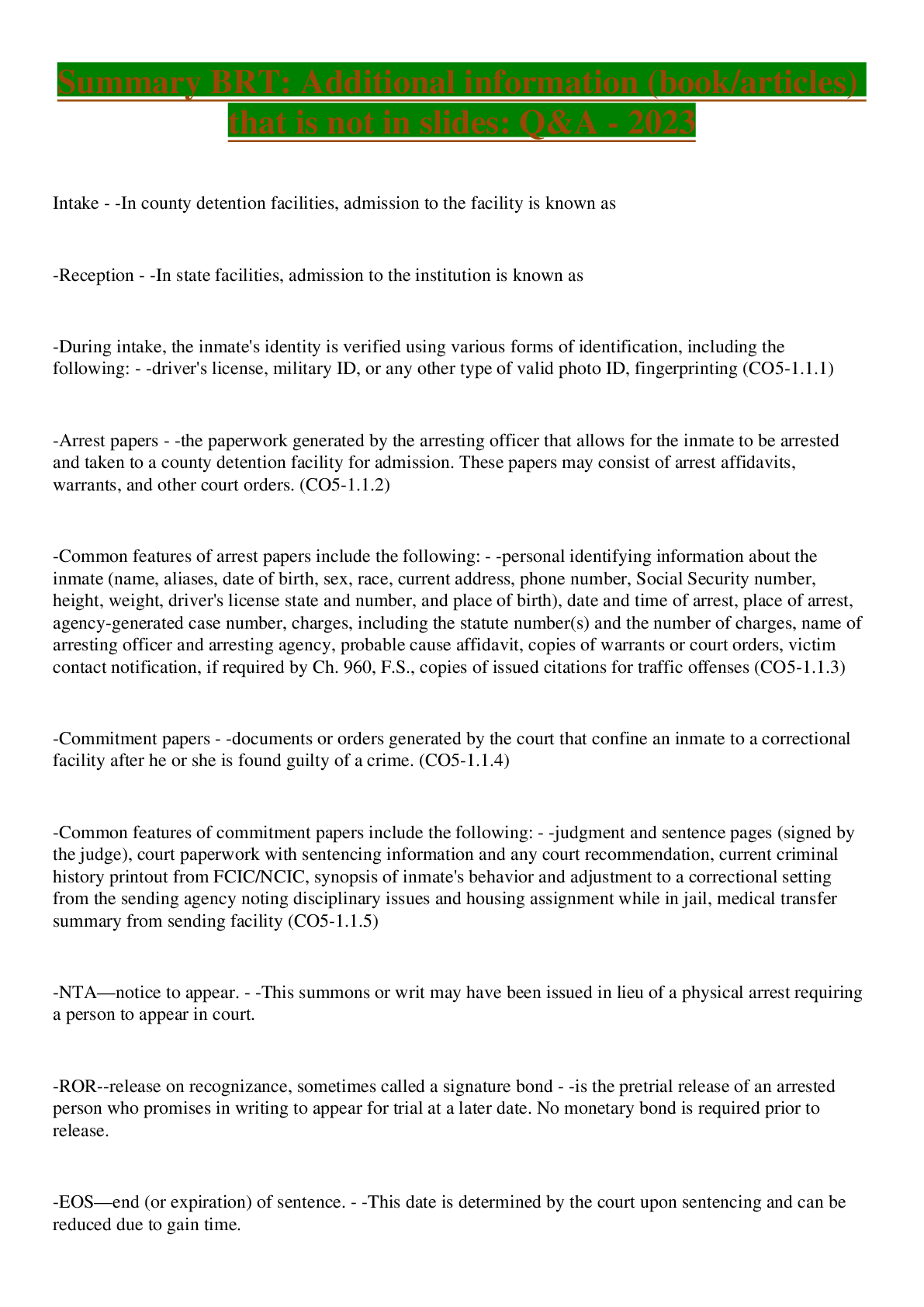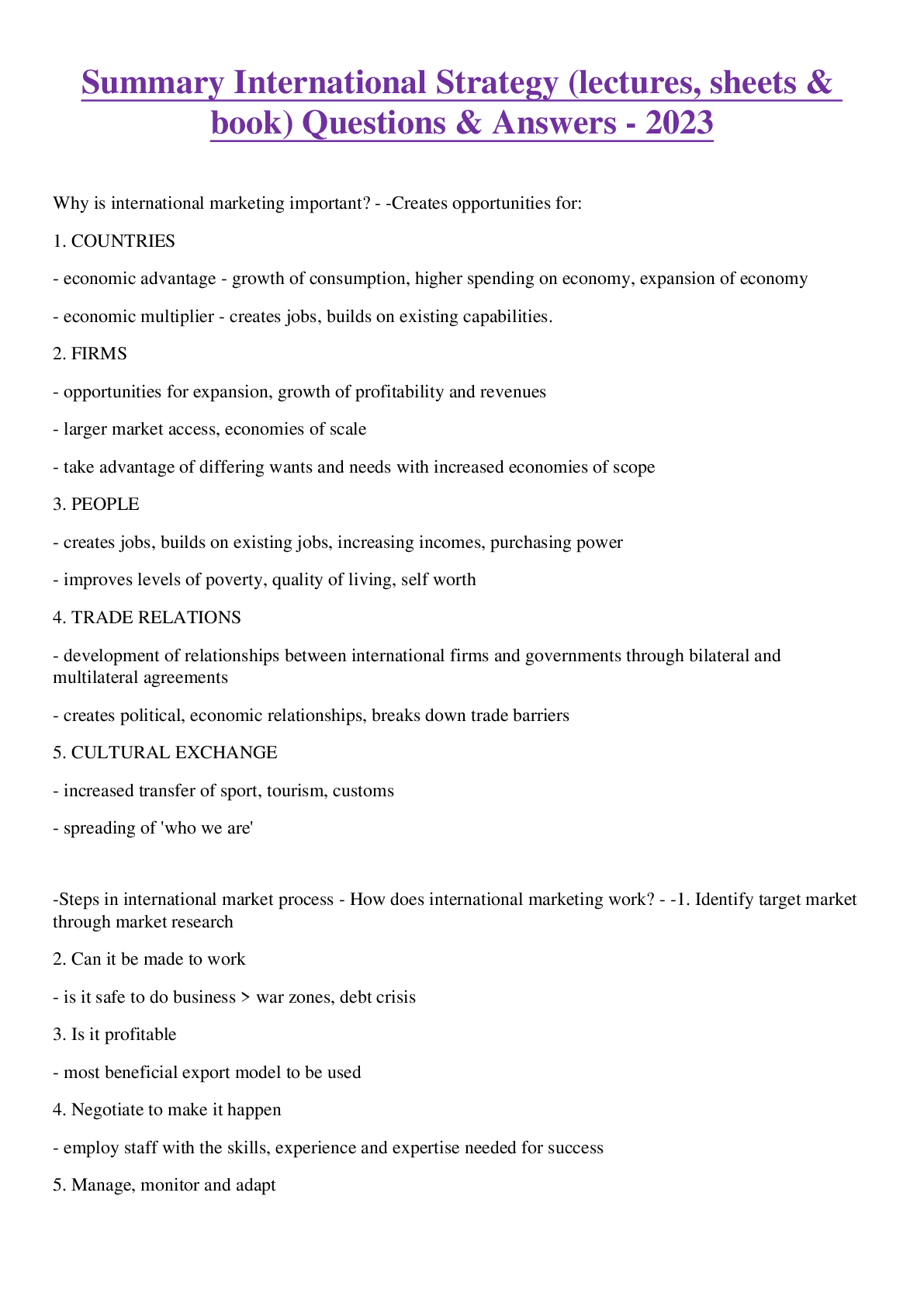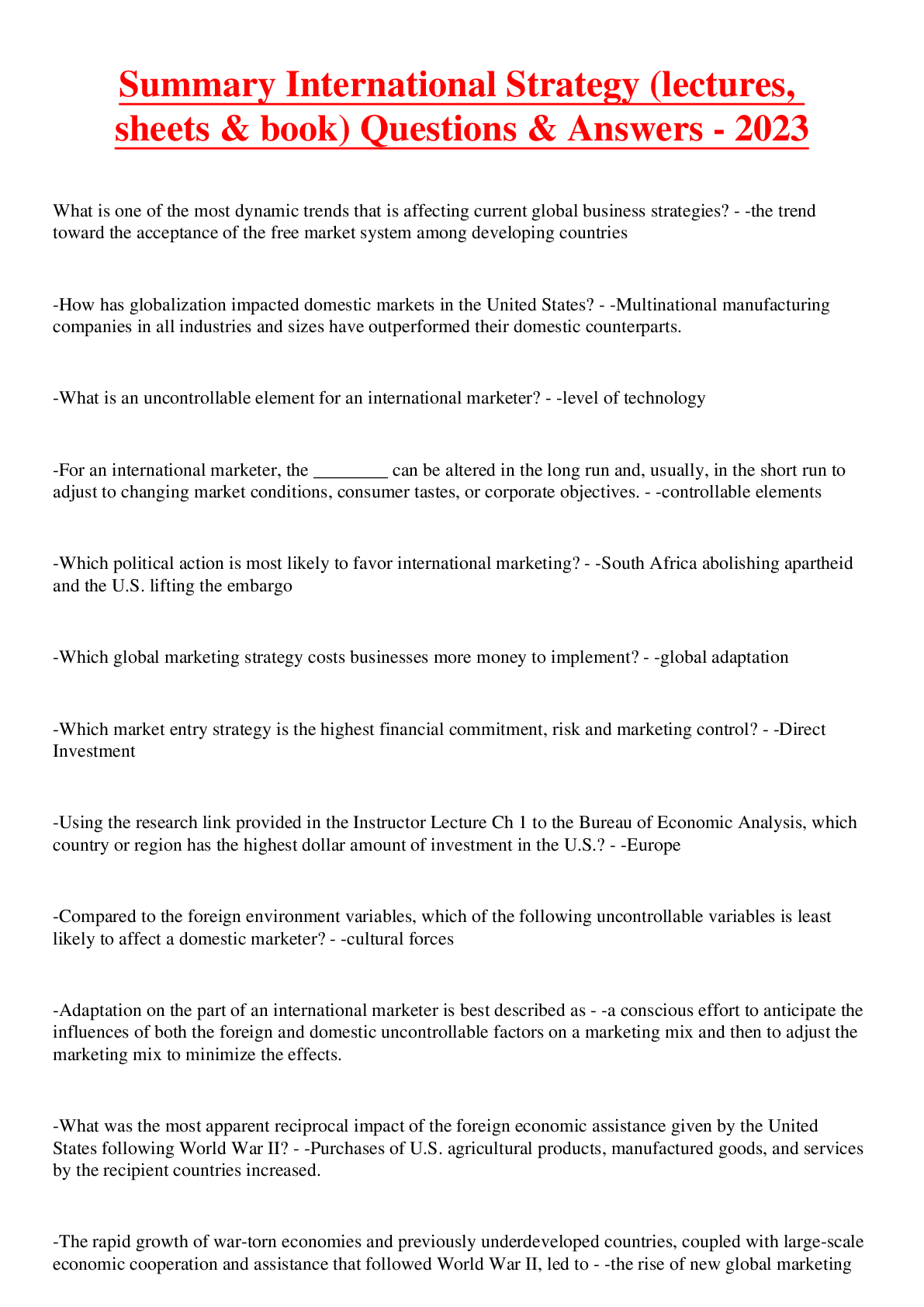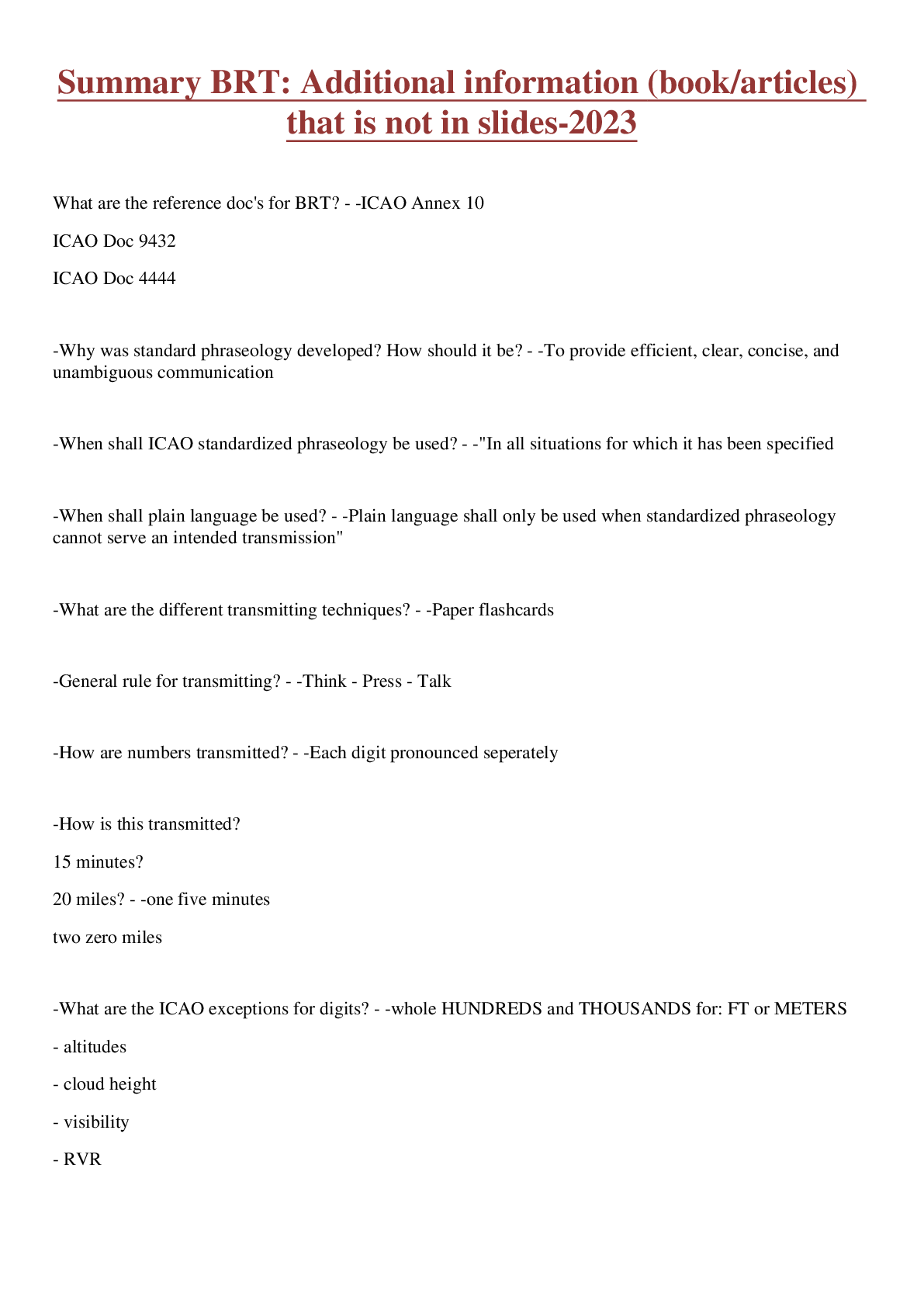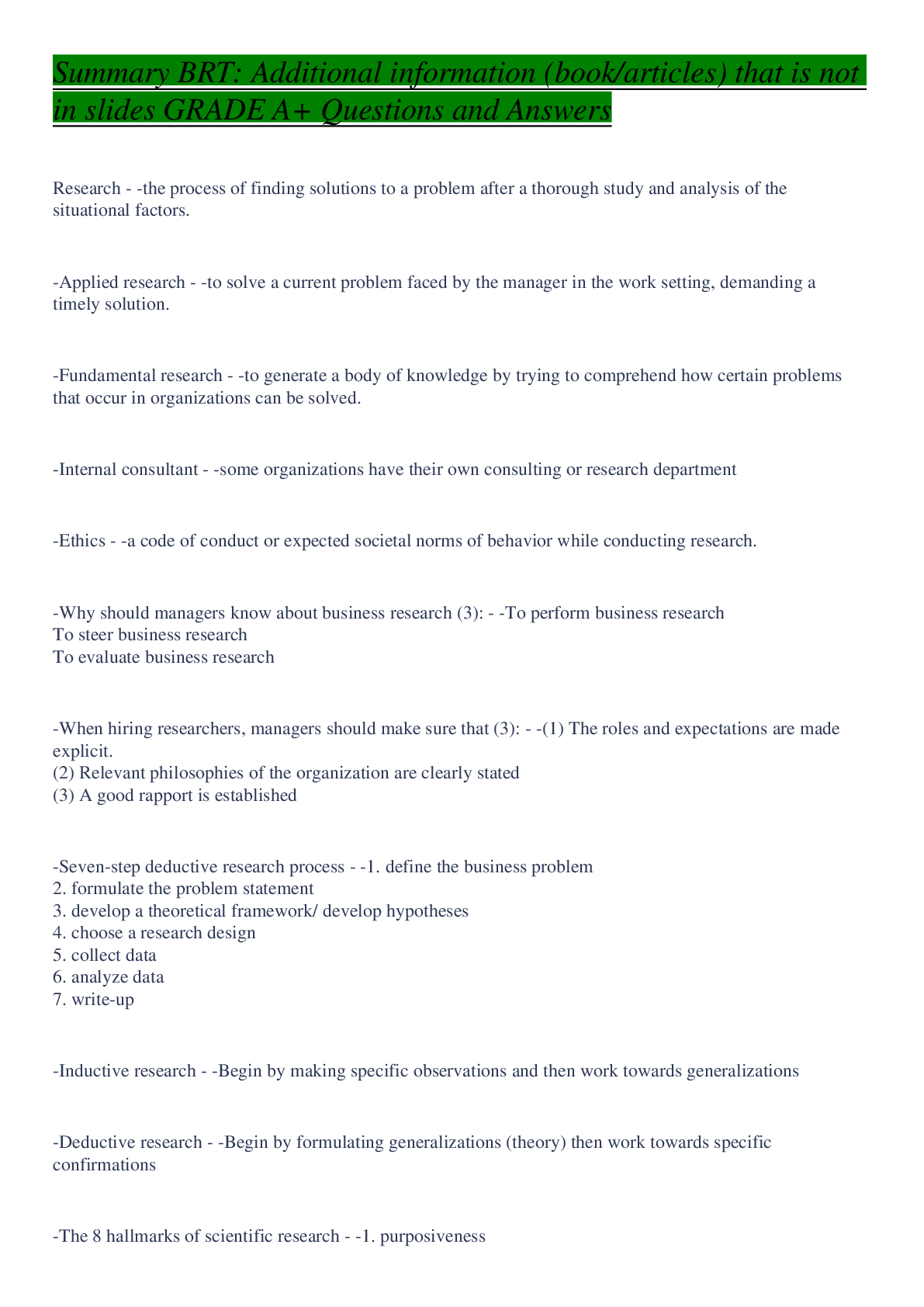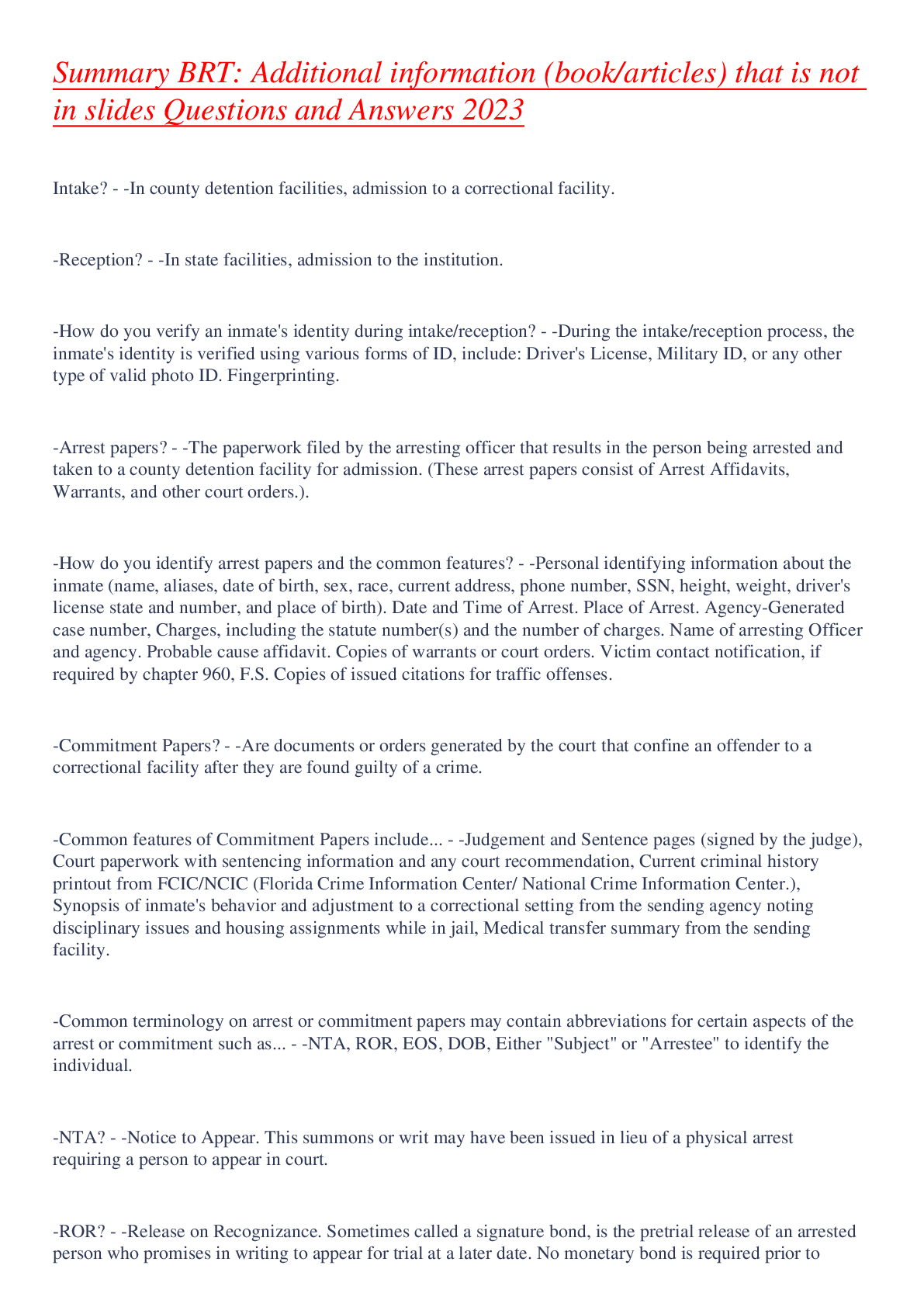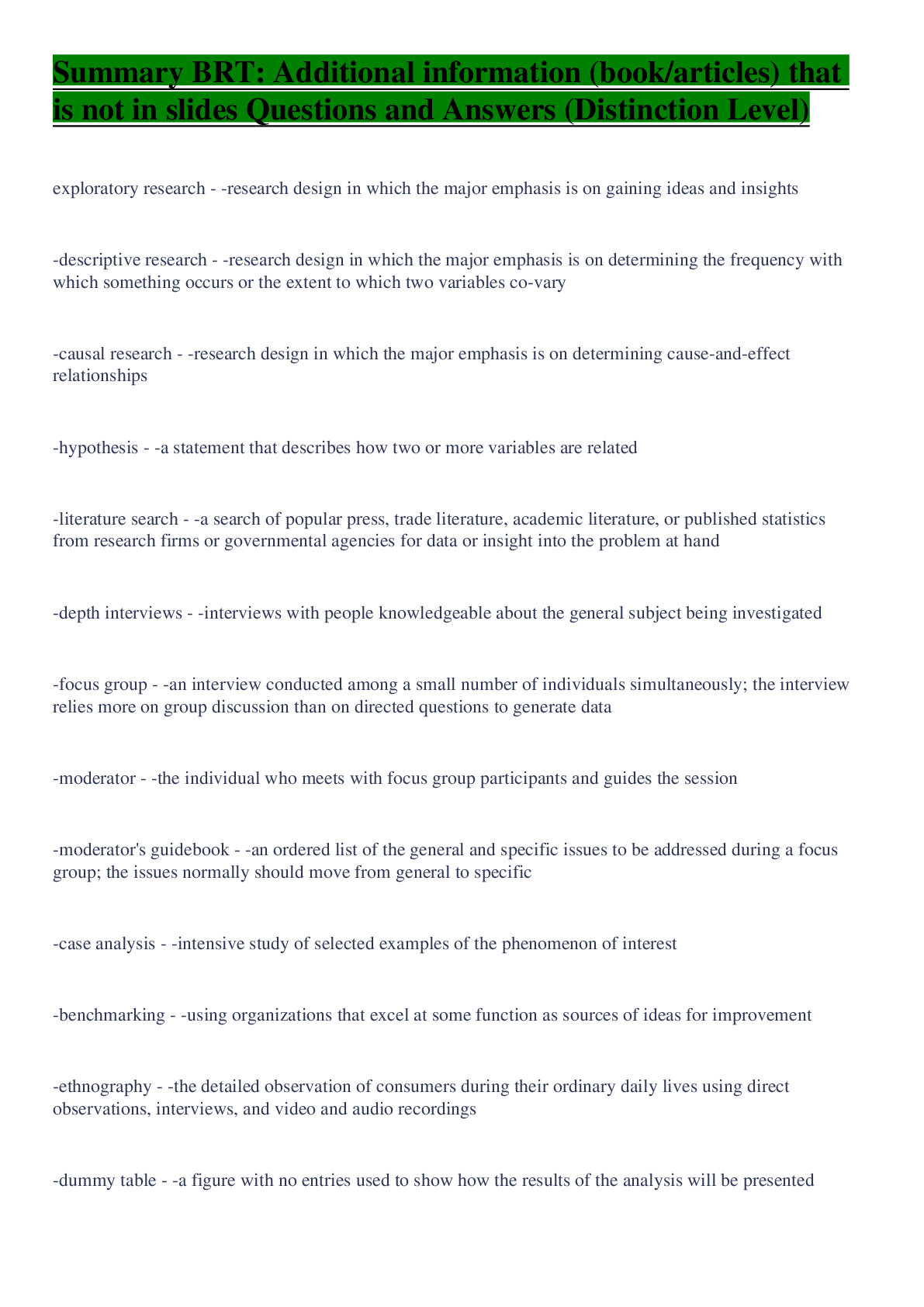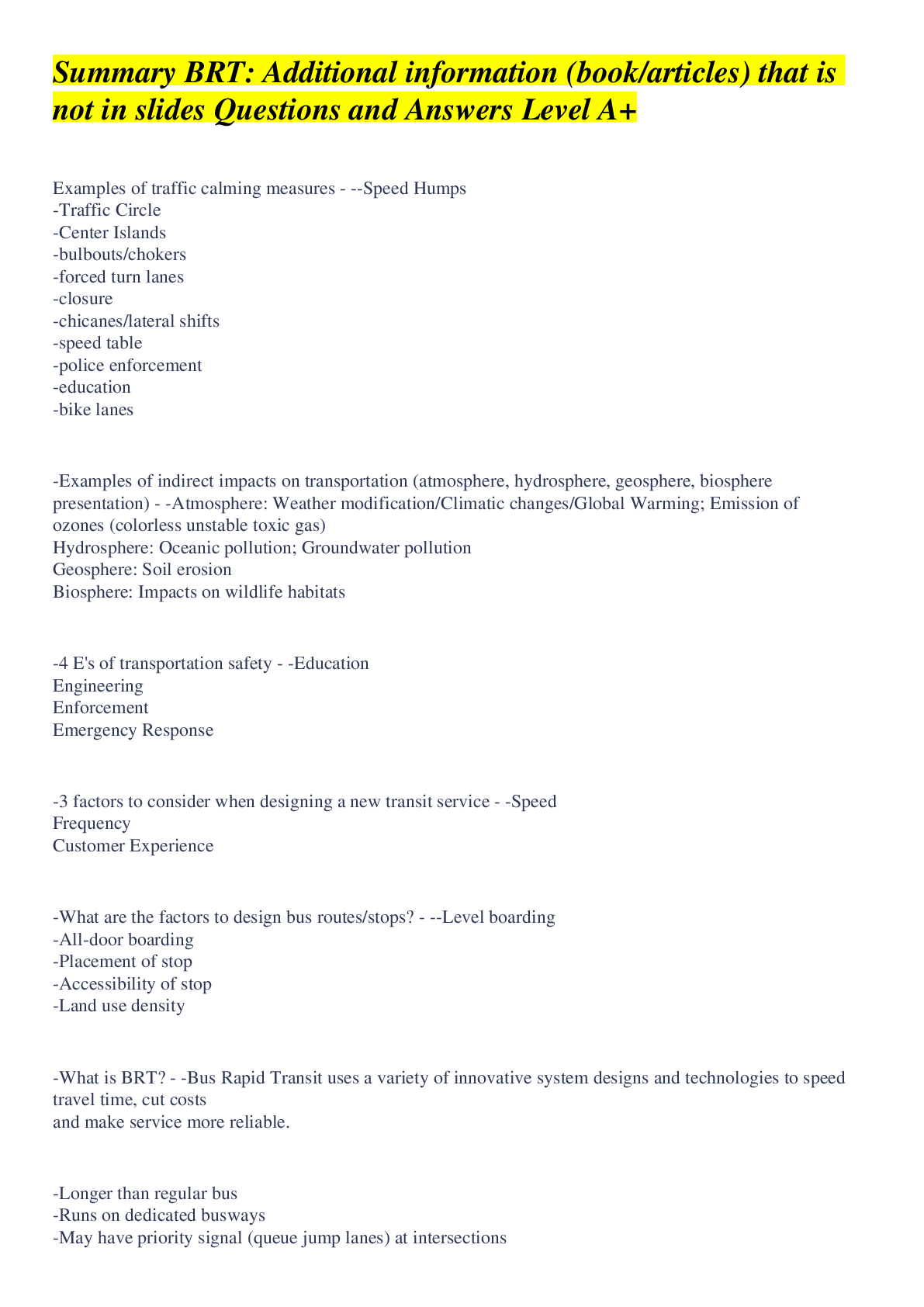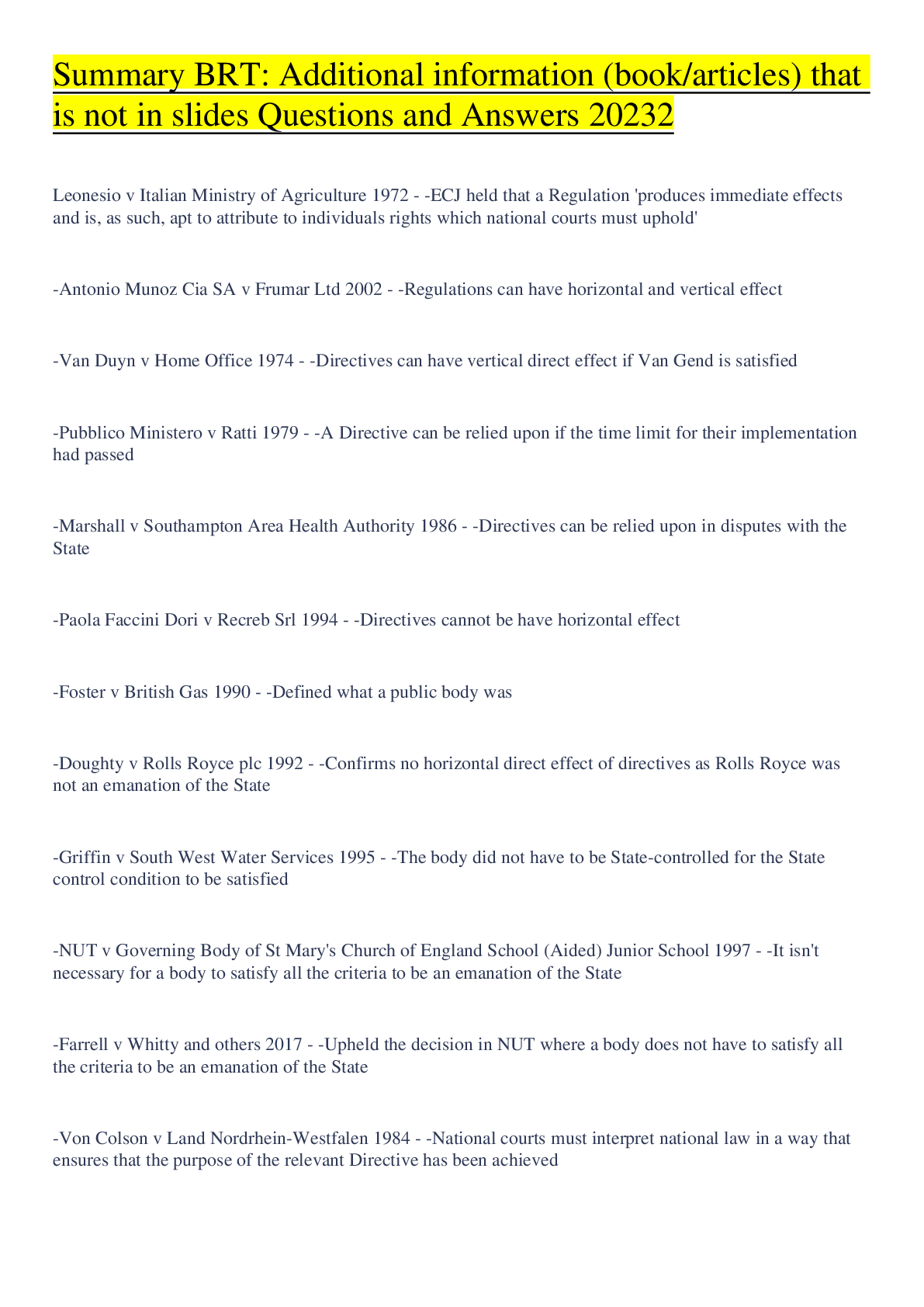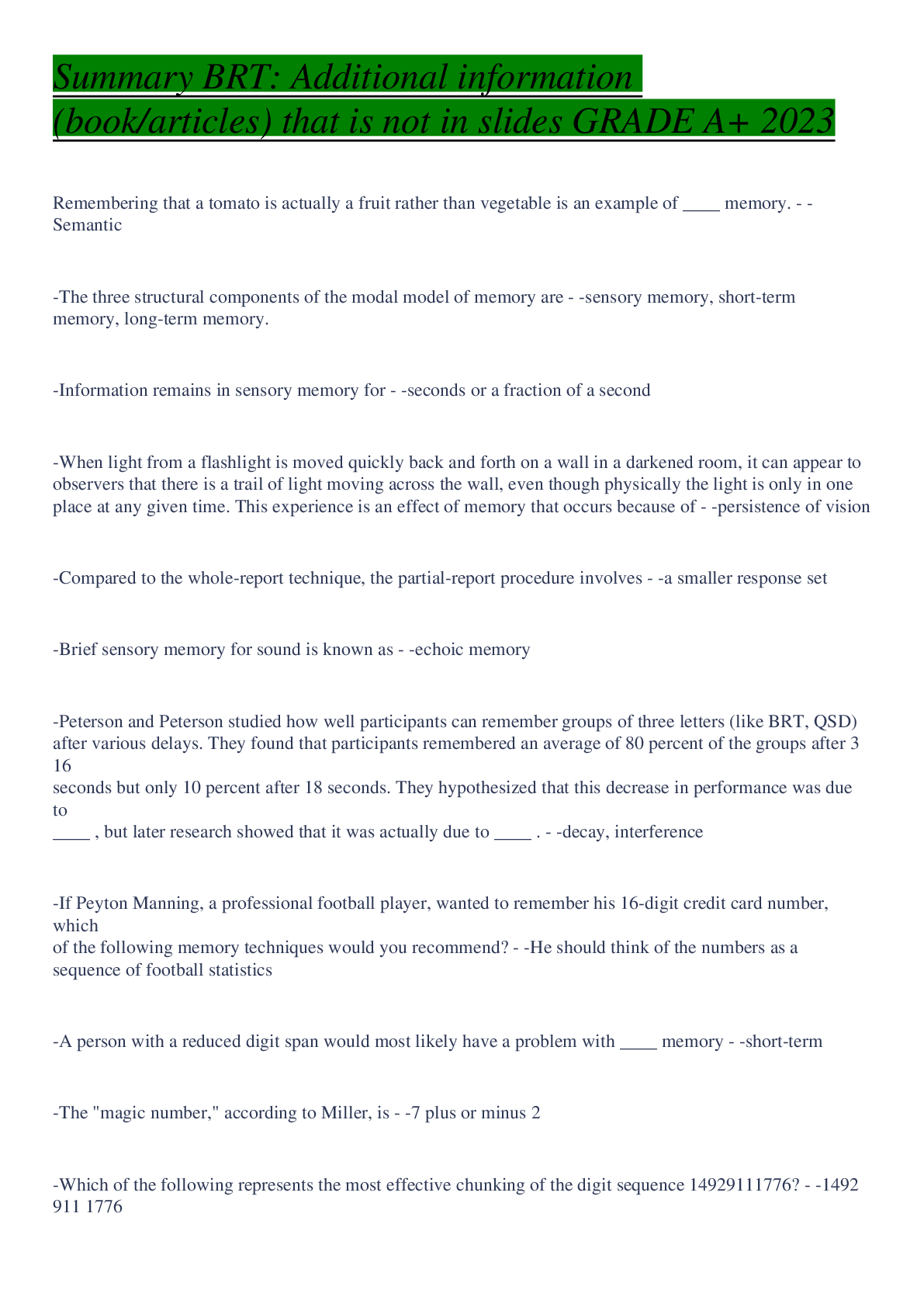Research Methods > EXAM > Summary BRT: Additional information (book/articles) that is not in slides: Questions & Answers- 2023 (All)
Summary BRT: Additional information (book/articles) that is not in slides: Questions & Answers- 2023
Document Content and Description Below
Definition exploratory research - -Exploratory research is inductive research. inductive research is qualitative in nature, instead of quantitative. Meaning that we don't number but 'words' info. -... Characteristics of exploratory/inductive research - -- To require an in-depth understanding when prior theory is absent - Often based on qualitative data => inductive research - Differs from deductive research in the seven-step process: Step 3 = conceptual background instead of theoretic framework, Step 7 = developing theory -Sources of data exploratory/inductive research - -Primary data is collected via field research, the three most important sources are: - In-depth interviews - Focus groups - Observations Secondary data is collected via desk research -Definition in-depth interviews - -A conversation where the researcher asks questions and listens to the respondent answers -Unstructured vs structured interviews - -1. Unstructured - Interviewer has only a vague idea bout info needed - No planned sequence of questions - Respondent talks openly and widely about the topic 2. Structured - Interviewer knows at the outset what info is needed - Interviewer has a list of predetermined questions - Respondent is asked the same set of questions in the same order by the interviewer => structure is determined. -Interviewing process - -1. Designing - Preparing/consist of an introduction and questions 2. Interviewing - Collecting data 3. Transcribing - Reproduce exactly and immediately the interview in original language 4. Analyzing - Grouping words and ideas, identify themes and partners 5. Reporting - Empirical description of the analysis, quotes, explanations -General tips for interviewing - Bias - -Refers to errors or inaccuracies in the data collected, there has to be as few as possible. Bias could be introduced by the interviewer or the situation. The projection of professionalism, enthusiasm, and confidence is important for the interviewer. -General tips for interviewing - Funneling - -At the beginning of an unstructured interview, it is advisable to ask open-ended questions to get a broad idea and form some impressions about the situation. From the responses to this broad question, further questions that are progressively more focused may be asked. The transition from broad to narrow themes is called the funneling technique. -(Dis)advantages Face-to-Face interviews - -- The main advantage of face-to-face interviews is that the researcher can adapt the questions as necessary, clarify doubts, and ensure that repeating or rephrasing the questions properly understands the responses. The interviewer also can analyze the mimic and facial emotions of the respondent. - The main disadvantage of face-to-face interviews are the geographical limitations, the higher costs and the unease that the respondent can feel if he's facing the interviewer. -Telephone interviews - -- The main advantage of telephone interviewing is that a number of different people can be reached, in a relatively short period of time. From the respondent's standpoint it eliminates the discomfort that some of them might feel in facing the interviewer. - The main disadvantage of telephone interviewing is that the respondent could unilaterally terminate the interview without warning or explanation, by hanging up. The other is, as mentioned before, that the interviewer cannot see the respondent. -Computer-assisted interviews - -There are two types of computer-assisted interview programs. The advantages of computer-assisted interviews are that they are quicker, more accurate and easier to analyze. The 2 types: - CATI (computer-assisted telephone interviewing) - CAPI (computer-assisted personal interviewing) -Focus groups - Group basis - -Consist typically of eight to ten members with a moderator leading the discussions for about two hours on a particular topic, concept, or product. The focus sessions are aimed at obtaining respondents' impressions, interpretations and opinions, as the members talk about the event, concept, product, or service. -Focus groups - Moderator - -The moderator introduces the topic, observes, and takes notes and/or tapes the discussions. The moderator never becomes an integral part of the discussions, but merely steers the group persuasively to obtain all the relevant information, and helps the group members to get through any impasse that might occur. The moderator must also ensure that all members participate and no member dominates the group. -Focus groups are used for: - -- Exploratory studies - Making generalizations based on the information generated by them to develop a general theory - These are not generalizable for the entire population! - Conducting sample surveys -Explain 'Panels' - -Panels are, like focus groups, another source of information. Whereas focus groups meet for a one-time group session, panels (of members) meet more than once. If the effects of phenomena are being studied, a panel can be very useful. -Explain 'static panel' - -In a static pane, the same members serve on the panel over extended period of time. The main advantage of the static panel is that it offers a good and sensitive measurement of the changes that take place between two points in time. The disadvantage is that the panel members could become more sensitized to the changes as a result of the endless continuous interviews that their opinions might no longer be. -Explain 'dynamic panel' - -In a dynamic panel, the panel members change from time to time as various phases of the study are in progress. The pros and cons of the dynamic panel are the opposite of the static panel. -The Delphi technique - -The Delphi technique is a forecasting method that used a cautiously selected panel of experts in a systematic, interactive manner. These experts answer questionnaires in two or more rounds. First they are asked to answer a series of questions on the likelihood of a future scenario or any other issue about which there is unsure or incomplete knowledge. Then all contributions are collected, summarized, and fed back in the form of a second-round questionnaire. Widely used for long-run business forecasting. -Key element of observation - -Observation involves going into the natural setting of people, watching what they do describing, analyzing and interpreting what one has seen. (employees, consumers, investors et cetera.) -Four key dimensions that characterize the type of observation - -1. Controlled vs. uncontrolled 2. Participant vs. nonparticipant observation 3. Structured vs. unstructured observation 4. Concealed vs. unconcealed observation -Explain 'Controlled observation' - -Observation conducted in controlled (artificial) settings. - Controlled observation occurs when observational research is carried out under carefully arranged conditions, uncontrolled observation is an observational technique that makes no attempt to control, manipulate, or influence the situation. -Explain 'Nonparticipant observations' - -In the case of the nonparticipant observation, the researcher is never directly involved in the actions of the actors, but observes them from outside the actors' visual horizon, e.g.: a camera -Explain 'Uncontrolled observation' - -Observation conducted in uncontrolled (natural) settings. An advantage of uncontrolled observations is that people can be observed in their natural shopping or work environment. A major drawback of uncontrolled observation is, however, that is usually difficult to untangle the often-complex situation since we do not control any factor in this. It is therefore very hard to distinguish the causes of events, action and behavior. -Explain 4 types of participant observation - -In participant observation the researcher gathers data by participating in the daily life of the group or organization. There are different degrees of participation: - Passive participation: Collect data without becoming an integral part of the system. E.g.: the researcher is sitting in a corner and describing the things he sees. - Moderate participation: Researcher does not actively participate and only occasionally interacts with the social group under study. - Active participation: Researcher actually engages in almost everything that the group under study is doing as means of trying to learn about the behavior. - Complete participation: Becoming a member of the group. -Explain 'Structured vs unstructured' observations - -When the observer has a predetermined set of categories of activities or phenomena planned to be studied, it is a structured observational study. Structured observation is generally quantitative in nature. Vice versa for unstructured. -Explain 'Concealed vs. unconcealed' observations - -Relates to whether the members of the social group under study are tol that they are being investigated. - Advantage of concealed observat [Show More]
Last updated: 1 year ago
Preview 1 out of 5 pages

Buy this document to get the full access instantly
Instant Download Access after purchase
Add to cartInstant download
We Accept:

Reviews( 0 )
$11.50
Document information
Connected school, study & course
About the document
Uploaded On
Apr 06, 2023
Number of pages
5
Written in
Additional information
This document has been written for:
Uploaded
Apr 06, 2023
Downloads
0
Views
51

